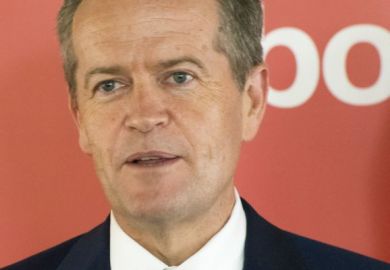Almost six months after the sudden exit of its vice-chancellor Peter Horrocks, the UK’s Open University is hoping to turn a new page in its history.
This week the distance learning provider’s council was due to consider plans to cut £30 million from its £420 million budget and shed about 10 per cent of its degrees. If ratified, the plans are likely to be announced next month, clearing the way for a less tumultuous year in 2019, when the institution will celebrate its 50th anniversary.
The scale of the cuts would seem severe for most universities, but things could have been much worse. In April, Mr Horrocks submitted plans to save £100 million a year in what he had previously called the “largest restructuring redundancy programme ever in UK university history”.
That proved too much for staff already infuriated by the former BBC executive’s remarks that the university’s distance learning model had allowed academics “to get away with not being teachers for decades”, and they passed a no-confidence motion in him. Mr Horrocks’ claim that he deserved his £360,000 salary, given the massive job losses he was instigating, did not help either.
Days after the university council met to consider the Student First transformation plan, Mr Horrocks quit with immediate effect on 13 April. Mary Kellett, an executive dean at the Milton Keynes-based university, who was due to retire that summer, was appointed interim head.
“It felt like a happier place the day he left,” one long-serving staff member told Times Higher Education, describing the episode as “the most turbulent period in the OU’s history”.
He added: “If you’re cutting £100 million, that is basically one in four jobs, so the anxiety levels on campus were very high.”
Few staff will deny that the university is in a difficult situation. Its student numbers have fallen from 260,000 in 2009-10 to 174,000 in 2016-17. This is mostly blamed on the change to the student finance regime in 2012 – which involved a huge cut to its block grant forcing it to raise its fees – and mature learners proving unwilling to take on big debts.
Others observe that traditional universities are now routinely providing distance learning, some of them through the OU’s own FutureLearn platform. With the OU’s unique selling point at risk in an ultra-competitive environment, was Mr Horrocks’ extreme cost-cutting regrettably required?
Many staff feel upheaval on the scale planned was not justified. “What Peter did was to set us up in a position where, from the outside, things seemed catastrophic,” explained Mark Brandon, professor of polar oceanography. “Student First, therefore, seemed like the only show in town,” he said, adding that predictions of looming disaster had a devastating impact on staff morale.
“We are in deficit – as many universities are – and we need to reverse that shortfall, but there are many things that institutions can do to stop this,” Professor Brandon added.
Professor Brandon is now more optimistic, saying that the new management is “fantastically open” to staff ideas. “There are Q&As with the vice-chancellor where we can ask anything, and people are asking some very spiky questions,” he said.
There is also a more realistic attitude to how fast the institution can change, said Martin Weller, professor of educational technology. “New initiatives and structures were being announced on an almost weekly basis,” he said of the Horrocks era.
Even though some of the ideas had merit, there were just too many to put into practice, Professor Weller claimed. “The teaching and learning review had 27 things in it – each of them was a major structural change,” he said, adding that “we are now looking at what our priorities are and which we can achieve”.
Official communications under Mr Horrocks also alienated many staff, explained Professor Weller. “We would receive messages describing the ‘business-to-customer market’ and there was no mention of ‘students’ or ‘learners’ – it was like being in W1A,” he said, referencing the BBC satire of its own corporate excess. “We know students are ultimately customers, but it’s not the sort of language that really appeals to academics,” he added.
The fact that enrolments have held up in Scotland, Wales and Northern Ireland, where costs to students did not change substantially in 2012, suggests that the OU’s offer is still attractive, Professor Weller argued.
“It seems like the larger issue is fees,” said Professor Weller, who, like many OU staff, will be hoping that the government’s review of post-18 education funding in England recommends action when it reports in the spring.
“The post-18 funding review will be critical, but there is at least a recognition that something needs to done about part-time provision,” said Professor Brandon, who feels that the OU should get special help.
“For one, we educate more students with disabilities than all other universities, so I think we should be treated differently, but we also need to become more dynamic,” he said.
POSTSCRIPT:
Print headline: OU looks to more positive future after tough times
Register to continue
Why register?
- Registration is free and only takes a moment
- Once registered, you can read 3 articles a month
- Sign up for our newsletter
Subscribe
Or subscribe for unlimited access to:
- Unlimited access to news, views, insights & reviews
- Digital editions
- Digital access to THE’s university and college rankings analysis
Already registered or a current subscriber? Login







